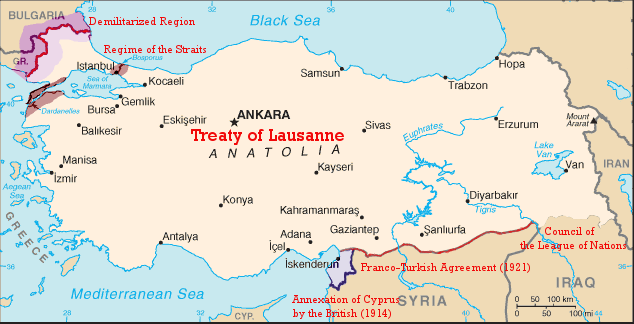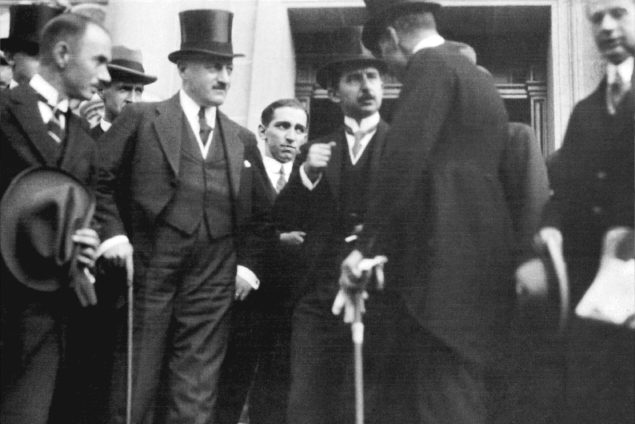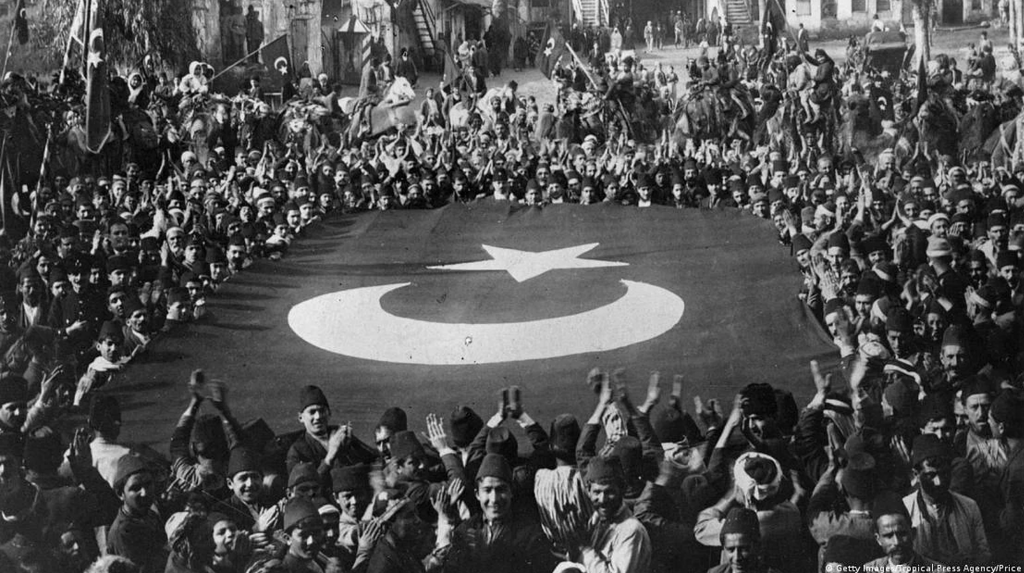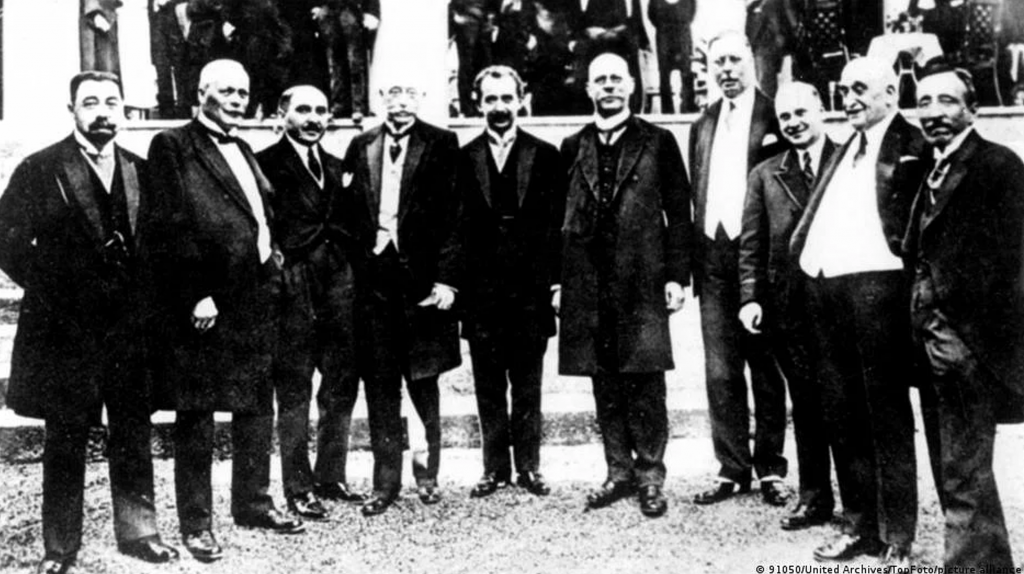Monday marked the centenary of the Treaty of Lausanne, a vital international agreement that not only determined the borders of modern-day Turkiye, but also had far-reaching implications for neighbouring states and nations.
As the name of suggests, the Treaty of Lausanne was signed at the Palace of Lausanne in the Swiss city by Lake Geneva. The signatories of this historic treaty on 24 July 1923 (pictured top) were the representatives of Turkiye (successor to the Ottoman Empire), who had just won its War of Independence, and several nations it had defeated, namely Britain, France, Italy and Greece, and five other states and kingdoms: Japan, Romania, and the Kingdom of Serbs, Croats, and Slovenes.
The Treaty of Lausanne replaced the Treaty of Sèvres, which had been drawn up in 1920 in the wake of World War I and the collapse of the Ottoman Empire, but wasnever been ratified by the Turks.
Under Sèvres, more territory of the Ottoman Empire was given away to the Allied powers and nations such as the Armenians and Kurds. Essentially, the Eastern Mediterranean was divided up between France (Syria and Lebanon) and Britain (Cyprus and Palestine), eastern Anatolia between Armenia and the newly created Kurdistan, and the Aegean coastline and islands between Greece and Italy. Essentially, any area that did not have a Turkish majority population was ceded to a foreign power or nation.
Naturally, the Turks resisted the terms of Sèvres and its victories on the battlefield meant it could push for a more favourable treaty three years later in Lausanne. This new treaty created the borders of modern Turkiye, which this year celebrates its centenary as a republic on 29 October.
However, the Turks had to cede the Dodecanese and other islands in the Aegean and Mediterranean to Greece and Italy, while Cyprus, the oil-rich Arab lands of the Middle East, and other North Africa territories such as Iraq, Egypt and Sudan went to France and Britain.
Further afield, the Turks also ceded what is today the territory of Yemen and Saudi Arabia, and renowned its privileges in Libya.
Turkiye did, however, keep two Aegean islands, Bozcaada and Gökçeada, both in Çanakkale Province.
In Europe, under Lausanne, the Turks officially ceded Adakale Island in the Danube River to Romania. The 1923 treaty also delimited the boundaries of Turkiye and its western neighbours Bulgaria and Greece.
Negotiations for a permanent peace treaty with the Turks started in November 1922 and took eight months to complete. The chief negotiator for Turkiye was İsmet İnönü, who faced Lord Curzon, the British Foreign Secretary of that time, as the chief negotiator for the Allies, while statesman Eleftherios Venizelos negotiated on behalf of Greece.

The Turks withdrew from the negotiations several times demanding more reasonable terms, which they finally secured. The Allies dropped demands for a separate Kurdish state and for a greater Armenia, and also imposed no controls over Turkiye’s finances or armed forces. The Allies also lost any sphere of influence on Turkish soil.
The Turkish straits between the Aegean Sea and the Black Sea declared open to all shipping. This lasted for 13 years, until it was replaced by the Montreux Convention in 1936.
One of the annexes added to the treaty, Annex VIII, was a ‘Declaration of Amnesty’, granting immunity to the perpetrators of any crimes “connected to political events” committed in Anatolia between 1914 and 1922. This saw multiple ethnic and religious groups targeted, resulting in mass killings and tens of thousands of people displaced.
Legacy of Lausanne
Lloyd George, a notorious anti-Turk who was British Prime Minister from 1916 to 1922, called the Treaty of Lausanne an “abject, cowardly and infamous surrender” by the Allies. Yet, 100 years on, the treaty’s fair terms ensured that stability reigns in Turkiye’s neighbourhood, with all sides respecting the borders drawn up in 1923, a feature many Turks believe also helped keep Turkiye out of World War II.

The Treaty of Lausanne also captured the existence and rights of minorities in Turkiye, and their Turkish equivalents in Western Thrace in Greece, who were all granted official minority status.
From the ashes of the collapse of the Ottoman Empire, the agreement struck in Lausanne paved the way for the modern Republic of Turkiye to be born.
It ended nearly a decade of war between the Turks and Entente Powers, which had started with World War I and ended with the Turkish War of Independence. On 13 October 1923, Ankara became the official capital of the new republic that was declared 16 days later, followed by the abolition of the Sultanate and the Caliphate.
One thing the Turks of the modern republic did bear was the debts of the Ottoman Empire, which they continued to pay until 1954.




